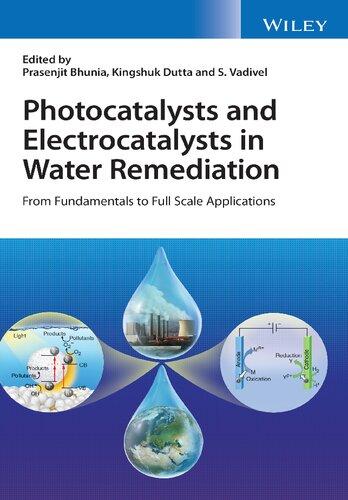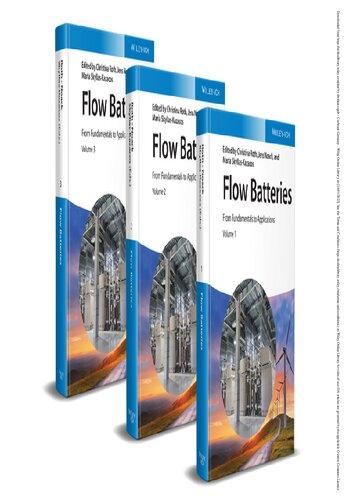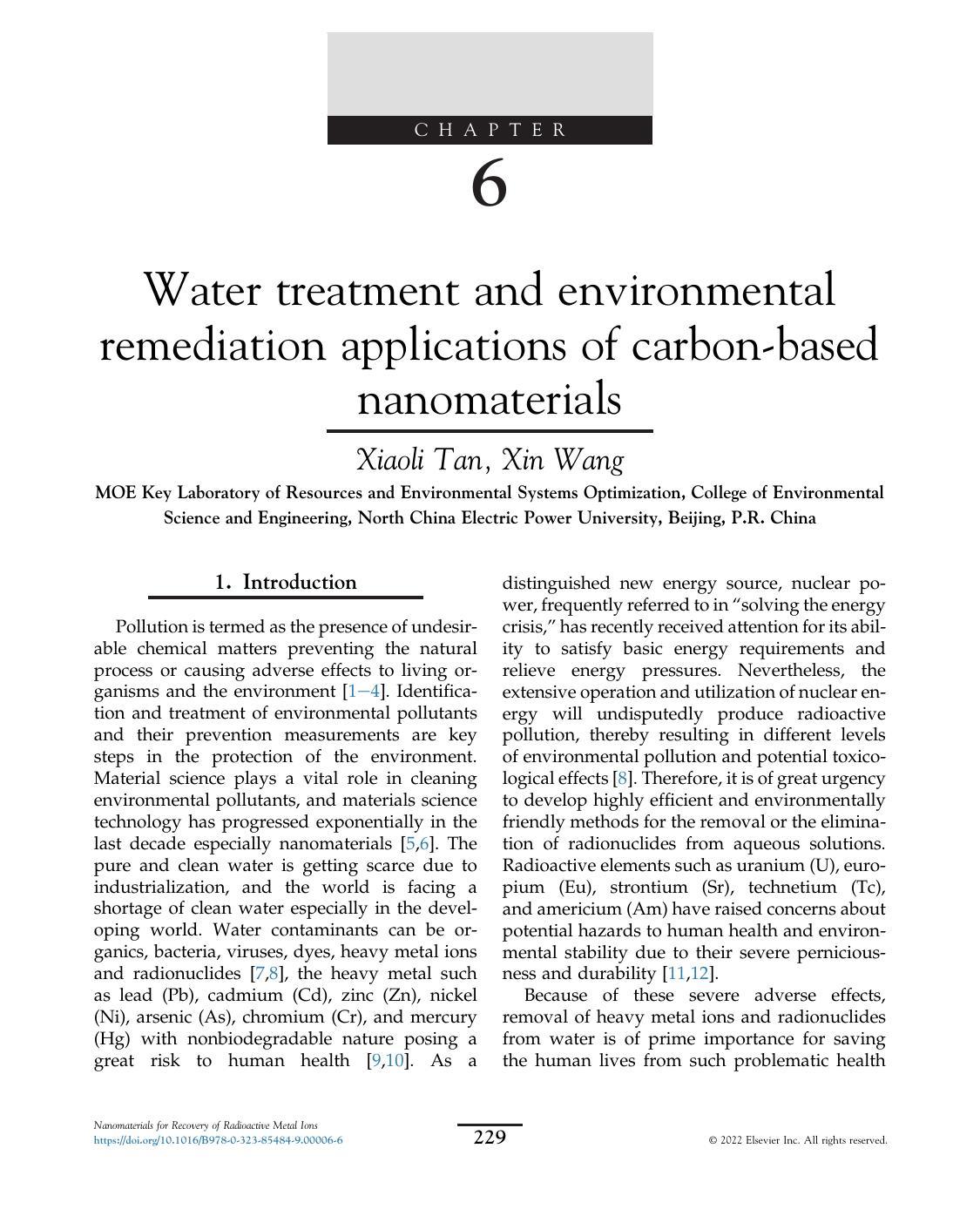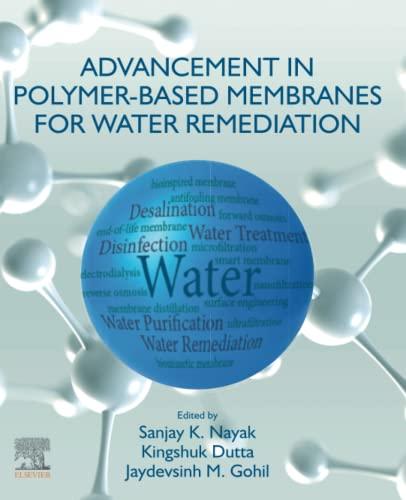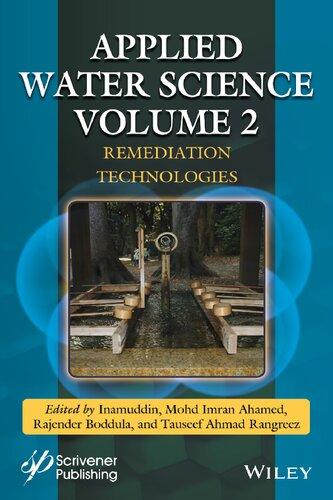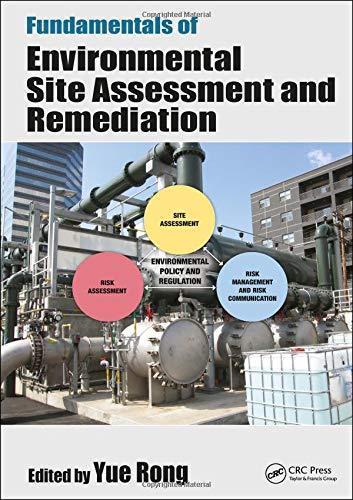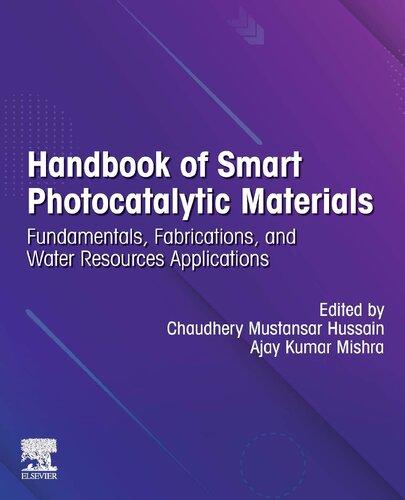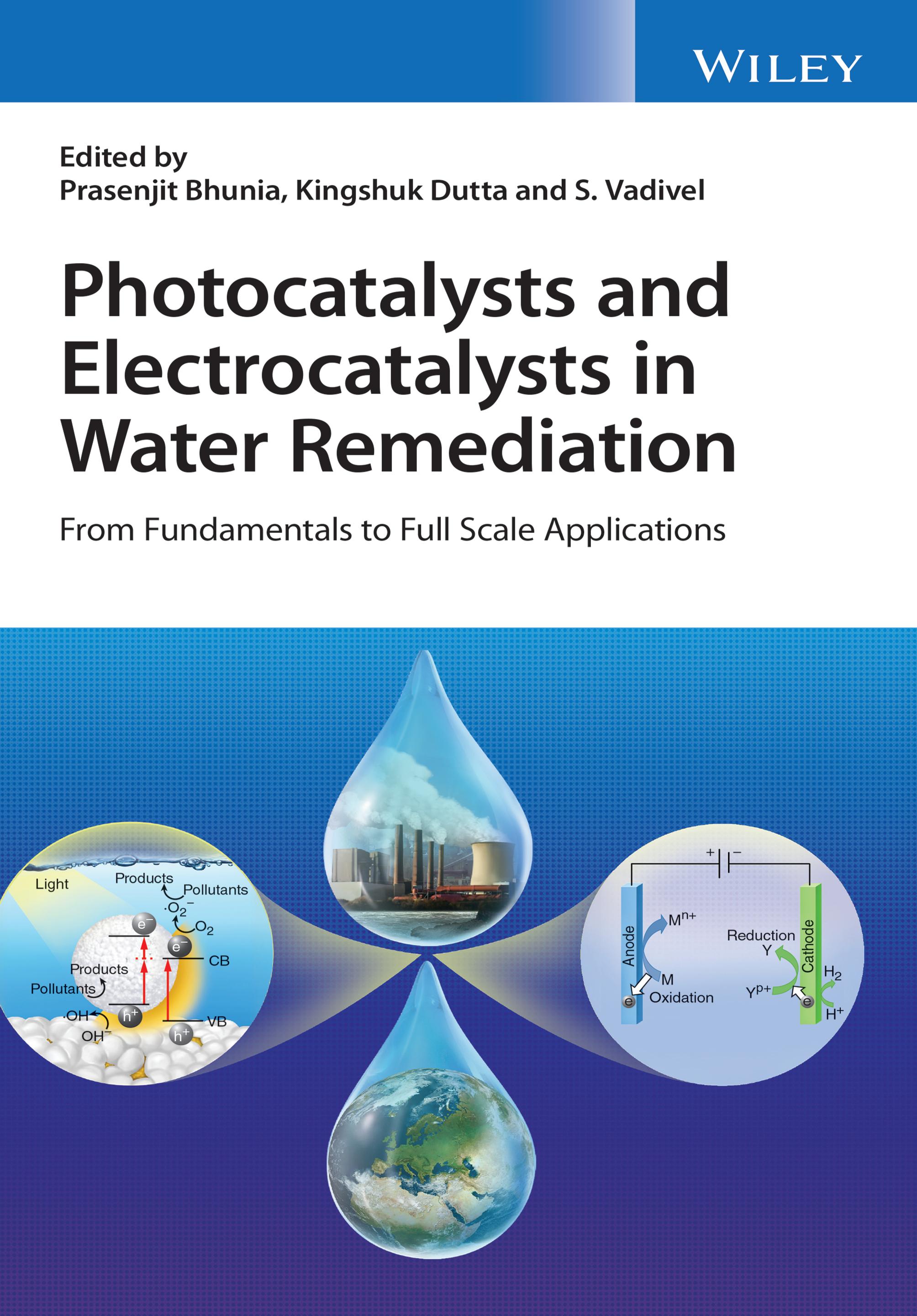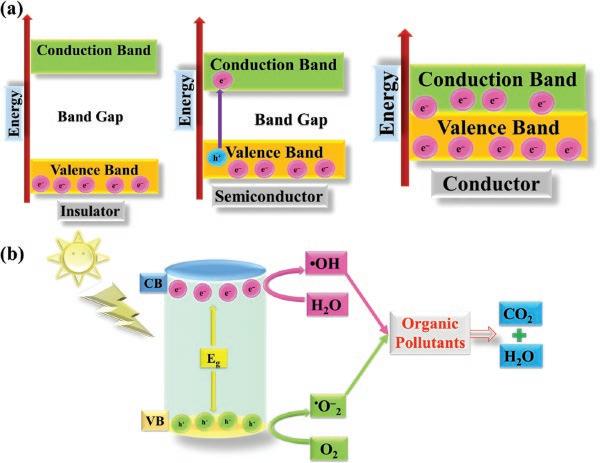Photocatalysts and Electrocatalysts in Water Remediation
From Fundamentals to Full Scale Applications
Edited by
Dr Prasenjit Bhunia
Silda Chandra Sekhar College, India
Dr Kingshuk Dutta
Central Institute of Petrochemicals Engineering and Technology (CIPET), India
Dr S. Vadivel
Saveetha Institute of Medical and Technical Sciences, India
This edition first published 2023 © 2023 John Wiley & Sons Ltd.
All rights reserved. No part of this publication may be reproduced, stored in a retrieval system, or transmitted, in any form or by any means, electronic, mechanical, photocopying, recording or otherwise, except as permitted by law. Advice on how to obtain permission to reuse material from this title is available at http://www.wiley.com/go/permissions.
The right of Prasenjit Bhunia, Kingshuk Dutta, Vadivel to be identified as the authors of this editorial material in this work has been asserted in accordance with law.
Registered Office(s)
John Wiley & Sons, Inc., 111 River Street, Hoboken, NJ 07030, USA
John Wiley & Sons Ltd, The Atrium, Southern Gate, Chichester, West Sussex, PO19 8SQ, UK
Editorial Office
The Atrium, Southern Gate, Chichester, West Sussex, PO19 8SQ, UK Boschstr. 12, 69469 Weinheim, Germany
For details of our global editorial offices, customer services, and more information about Wiley products visit us at www.wiley.com.
Wiley also publishes its books in a variety of electronic formats and by print-on-demand. Some content that appears in standard print versions of this book may not be available in other formats.
Limit of Liability/Disclaimer of Warranty
In view of ongoing research, equipment modifications, changes in governmental regulations, and the constant flow of information relating to the use of experimental reagents, equipment, and devices, the reader is urged to review and evaluate the information provided in the package insert or instructions for each chemical, piece of equipment, reagent, or device for, among other things, any changes in the instructions or indication of usage and for added warnings and precautions. While the publisher and authors have used their best efforts in preparing this work, they make no representations or warranties with respect to the accuracy or completeness of the contents of this work and specifically disclaim all warranties, including without limitation any implied warranties of merchantability or fitness for a particular purpose. No warranty may be created or extended by sales representatives, written sales materials or promotional statements for this work. The fact that an organization, website, or product is referred to in this work as a citation and/or potential source of further information does not mean that the publisher and authors endorse the information or services the organization, website, or product may provide or recommendations it may make. This work is sold with the understanding that the publisher is not engaged in rendering professional services. The advice and strategies contained herein may not be suitable for your situation. You should consult with a specialist where appropriate. Further, readers should be aware that websites listed in this work may have changed or disappeared between when this work was written and when it is read. Neither the publisher nor authors shall be liable for any loss of profit or any other commercial damages, including but not limited to special, incidental, consequential, or other damages.
A catalogue record for this book is available from the Library of Congress
Hardback ISBN: 9781119855316; ePub ISBN: 9781119855330; ePDF ISBN: 9781119855323; Obook ISBN: 9781119855347
Cover image: Courtesy of Kingshuk Dutta
Cover design by Wiley
Set in 9.5/12.5pt STIXTwoText by Integra Software Services Pvt. Ltd, Pondicherry, India
Contents
Preface ix
About the Editors xi
List of Contributors xiii
Acknowledgements xv
1 Fundamentals and Functional Mechanisms of Photocatalysis in Water Treatment 1
1.1 Introduction 1
1.2 Different Photocatalytic Materials for Water Treatment 2
1.3 In-depth Mechanisms of Photocatalysis 9
1.4 Visible Light Driven Photocatalysts for Water Decontamination 20
1.5 Summary 25
2 Different Synthetic Routes and Band Gap Engineering of Photocatalysts 39
2.1 Introduction 39
2.2 Synthesis of Photocatalysts 40
2.3 Properties of Ideal Photocatalytic Material 57
2.4 Engineering Photocatalytic Properties 58
2.5 Energy Bandgap 59
2.6 Engineering the Desired Band Gap 64
2.7 Photocatalytic Mechanisms, Schemes and Systems 69
2.8 Summary and Perspectives 71
3 Photocatalytic Decontamination of Organic Pollutants from Water 81
3.1 Introduction 81
3.2 Photocatalytic Degradation Mechanisms of Organic Contaminants 82
3.3 Advanced Photocatalytic Materials for Decontamination of Organic Pollutants 83
3.4 Solar/Visible-light Driven Photocatalytic Decontamination of Organic Pollutants 85
3.5 Emerging Scientific Opportunities of Photocatalysts in Removal of Organic Pollutants 87
3.6 Limitations of Photocatalytic Decontamination and Key Mitigation Strategies 95
3.7 Summary and Future Directions 96
4 Photocatalytic Removal of Heavy Metal Ions from Water 105
4.1 Introduction 105
4.2 Mechanistic Insights on Photocatalytic Removal of Heavy Metal Ions 110
4.3 Solar/Visible-light Driven Photocatalysts for the Removal of Heavy Metal Ions 113
4.4 Selective Heavy Metal Ion Removal by Semiconductor Photocatalysts 123
4.5 Major Drawbacks and Key Mitigation Strategies 125
4.6 Summary and Future Directions 126
5 Smart Photocatalysts in Water Remediation 135
5.1 Introduction 135
5.2 Advances in the Development of Visible-light Driven Photocatalysts 138
5.3 Advances in Photocatalyst Immobilization and Supports 142
5.4 Advances in Nonimmobilized Smart Photocatalysts 144
5.5 Advances in Improving the Efficiency of Light Delivery 149
5.6 Advances in Biomaterials for Designing Smart Photocatalysts 157
5.7 Advances Toward Improving Photocatalytic Activity via External Stimuli 159
5.8 Advances in Inhibiting the Photocorrosion of Semiconductor-based Photocatalysts 164
5.9 Advances in Recycling Photocatalysts: Assessing the Photocatalyst Life Cycle 166
5.10 Summary, Future Challenges, and Prospects for Further Research 167
6 Fundamentals and Functional Mechanisms of Electrocatalysis in Water Treatment 189
6.1 Introduction 189
6.2 Electrocatalysis Treatment 190
6.3 Properties and Characteristics of Different Electrocatalysis Techniques 192
6.4 Case Studies and Successful Approaches 202
6.5 Conclusion 217
7 Different Synthetic Routes of Electrocatalysts and Fabrication of Electrodes 229
7.1 Introduction 229
7.2 Fundamental Principles of Alkaline Water Oxidation 230
7.3 Electrochemical Evaluating Parameters of Electrocatalysts for OER Performance 231
7.4 Electrocoagulation 233
7.5 Electroflotation 233
7.6 Electrocoagulation/flotation 233
7.7 Electro-oxidation in Wastewater Treatment 233
7.8 Doped Diamond Electrodes 234
7.9 Conclusion 235
8 Electrocatalytic Degradation of Organic Pollutants from Water 241
8.1 Introduction 241
8.2 Principles and Fundamental Aspects of Electrooxidation 242
8.3 Electrode Materials and Cell Configuration 244
8.4 Performance Assessment Indicators and Operating Variables 250
8.5 Electrochemical Filtering Process: A Hybrid Process Based on Electrooxidation and Filtering 253
8.6 Integration of Electrooxidation-based Processes in Water/Wastewater Treatment Technological Flow 259
9 Electrocatalytic Removal of Heavy Metal Ions from Water 275
9.1 Introduction 275
9.2 Fundamentals 277
9.3 Advantages and Disadvantages of the Electrocatalytic Approach 283
9.4 Summary 284
10 Combined Photoelectrocatalytic Techniques in Water Remediation 289
10.1 Introduction 289
10.2 Photoelectrocatalysts for Treatment of Water Contaminants 292
10.3 Simultaneous Removal of Organic and Inorganic Pollutants 302
10.4 Conclusions and Perspective 304
Index 311
Preface
A wide array of wastewater treatment alternatives are being investigated nowadays, and this is owing to the increase in polluted wastewater generation because of the growth in population and industrial activities. Advanced oxidation processes (AOPs) have become, in the last few years, a selected alternative due to several advantages, such as their nonselective degradation of pollutants and their easy setup. Photo-based processes have always been one of the most preferred AOP options, due to the possibility of using solar radiation that may reduce the AOPs’ high elevated costs. Photocatalysis processes fall under the AOP category, and it is studied worldwide for various applications. A photocatalyst is defined as a “catalyst able to produce, upon absorption of light, chemical transformations of the reaction partners” [1]. The excited state of a photocatalyst interacts repeatedly with the reaction partners, resulting in the formation of reaction intermediates, and regenerates itself after each cycle of such interactions. In effect, the photocatalyst is activated with radiation, which brings about the separation of electrons and holes from, respectively, the valence and conduction bands of semiconductor photocatalysts. This, in turn, starts a series of chain reactions that lead to the generation of oxidants and, ultimately, to pollutant degradation. However, even photocatalysis has limitations for future applications; for instance, the electrons and holes are usually recombined, long treatment times are required, etc. As a solution, the combination of photocatalysis with the application of an electrochemical field (photoelectrocatalysis) has been contemplated.
On the other hand, electrochemistry, an interdisciplinary field of interfacial charge transfer, has been introduced for the decontamination of both organic and inorganic pollutants, and therefore has developed significant worldwide interest toward water remediation. In this connection, electrocatalytic oxidation and reduction usually work together to decompose organic contaminants, and convert heavy metal ions from their toxic to nontoxic form in electrocatalytic advance oxidation processes (EAOPs). Although this technique was elucidated long back in the 1970s, it is only in recent years that the electrocatalysts have become highly encouraging materials toward water remediation. Electrocatalysts degrade or convert the contaminants (organic or inorganic) through profound collision of a very clean reagent – “the electron”; therefore, the technique is recognized as environmentally benign. In addition, this technique has been found to be highly versatile toward degradation of various contaminants, including dyes, pesticides and herbicides, phenolic compounds, pharmaceuticals, etc., and is also able to convert heavy metal ions from their
Preface x
toxic to nontoxic forms. Moreover, the most attractive features of EAOPs toward water treatment are high treatment efficiencies, accumulation of less toxic by-products, and environmental friendliness.
The subject of this book has been meticulously designed to cover both the photo and electrocatalytic water remediation aspects, starting from fundamentals to the applications. This book describes the major functions of catalysts (photo-, electro-, and electrophoto-) in the domain of water remediation, along with the involved chemical reactions, mechanisms, challenges, and up-to-date developments. In addition, the scope of further research on photo, electro, and electrophotocatalysts is also thoroughly discussed. Enriched with critically analyzed and expertly opined contributions from several well-known researchers around the world, this book is likely to serve as one of the most comprehensive and authoritative pieces of literature that has ever been published in this field, and will undoubtedly serve as a potent source of information for those interested in this field.
Prasenjit Bhunia
Kingshuk Dutta
S. Vadivel
Reference
1 IUPAC, (1997) Compendium of Chemical Terminology: The Gold Book. Oxford: Blackwell Scientific Publications.
About the Editors
Dr. Prasenjit Bhunia has obtained his Masters and Doctorate in Inorganic Chemistry from Jadavpur University, Kolkata, India. In addition, he has done Post-Doctoral research at National Taiwan University, Taiwan and Sungkyunkwan University, Suwon, South Korea, and has gained prolonged experience in Graphene/Graphene Oxide and their functionalization and applications. He has also served as an Institute Post-Doctoral Fellow in the Department of Chemical Engineering, Indian Institute of Technology Kharagpur, India, and has gathered significant experience in photocatalysis and electrocatalysis. Furthermore, he has noticeable industrial experience from working at Hindustan Unilever Limited, Bangalore and TCG Life Sciences, Kolkata, India. In addition, he has served as a Principal Researcher at TATA Steel Limited, Jamshedpur, India, where he has gained outstanding experience in the field of photocatalytic wastewater treatment. Now, he serves as an Assistant Professor in the Department of Chemistry, Silda Chandra Sekhar College, Jhargram, India (affiliated to Vidyasagar University, Paschim Medinipur, India). At this time, he has 23 international peer reviewed journal articles, 7 book chapters and 5 patents to his credit. His present research field is photocatalytic water treatment.
Dr. Kingshuk Dutta, FICS, is currently employed as a Scientist in the Advanced Polymer Design and Development Research Laboratory of the Central Institute of Petrochemicals Engineering and Technology, India. Prior to this appointment, he worked as an Indo–US Postdoctoral Fellow at Cornell University, USA (2018–19) and as a National Postdoctoral Fellow at the Indian Institute of Technology – Kharagpur, India (2016–17), both funded by the Science and Engineering Research Board, Govt. of India. Earlier, as a Senior Research Fellow funded by the Council of Scientific and Industrial Research, Govt. of India., he had carried out his doctoral study at the University of Calcutta, India (2013–16). He possesses degrees in both technology (B. Tech. and M. Tech.) and science (B. Sc.), all from the University of Calcutta. He was also a recipient of the prestigious Graduate Aptitude Test in Engineering (GATE) and National Scholarship, both from the Ministry of Human Resource Development, Govt. of India. His areas of research interest lie in the fields of fuel cells (including alcohol, bio/microbial, and hydrogen fuel cells), sensors, water purification, polymer blends and composites, and biodegradable polymers. At this time, he has contributed to 54 experimental and review papers in reputed international platforms, 25 book chapters, 1 patent application, and many national and international presentations. In
addition, he has edited/co-edited four books published by Elsevier and two books published by the American Chemical Society. He has also served as a guest associate handling editor for Frontiers in Chemistry and a peer-reviewer for over 180 journal articles, conference papers, book chapters, and research project proposals. He is a life member and an elected fellow of the Indian Chemical Society, a life member of the International Exchange Alumni Network (US Department of State) and a member of the Science Advisory Board (USA). Earlier, he held memberships with the International Association for Hydrogen Energy (USA), the International Association of Advanced Materials (Sweden), the Institute for Engineering Research and Publication (India) and the Wiley Advisors Group (USA).
Dr. S. Vadivel is currently working as an Assistant Professor (Senior Grade) in the Department of Electrochemistry, Saveetha School of Engineering, Saveetha Institute of Medical and Technical Sciences, Tamil Nadu, India. He obtained his PhD in Chemistry (2015) from the AC Tech Campus, Anna University, Chennai, and then successfully completed his postdoctoral fellowship tenure at the Tokyo Institute of Technology, Tokyo, Japan, under the highly prestigious JSPS Fellowship. Furthermore, he received the highly prestigious PIFI fellowship from the Chinese Academy of Sciences in 2019. His current research involves the development of novel materials with graphene, graphitic carbon nitride, in combination with metals, metal oxides, polymers, and carbon nanotubes for energy conversion & storage, and removal of various toxic pollutants. His research results have been documented in 66 peer-reviewed journals, including 5 review articles and 10 book chapters. He also has more than 2200 citations with an h-index of 25. He served as a guest editor for a special issue of Frontiers in Chemistry, and is currently serving as an associate editor for Heliyon journal and editing two books for reputed publishers. He is also serving as a peer-reviewer for various high impact journals from Royal Society of Chemistry, American Chemical Society, and Elsevier journals. He has supervised one PhD Scholar under the DST-SERB (Early Career Research Award Scheme) and is currently guiding two PhD scholars.
List of Contributors
Ahmed M. Awad Abouelata Chemical Engineering & Pilot Plant Department, Engineering Division, National Research Centre (NRC), Dokki, Giza, Egypt
Mohsen Ahmadipour Institute of Microengineering and Nanoelectronics, Universiti Kebangsaan Malaysia, Bangi, Selangor, Malaysia
Baquir Mohammed Jaffar Ali Department of Green Energy Technology, Madanjeet School of Green Energy Technologies, Pondicherry University, Puducherry, India
Anamaria Baciu Politehnica University Timisoara, Faculty of Industrial Chemistry and Environmental Engineering, P-ta Victoriei, Timisoara, Romania
Prasenjit Bhunia Department of Chemistry, Silda Chandra Sekhar College, Jhargram, West Bengal, India
Dhruba Chakrabortty Department of Chemistry, B.N. College, Dhubri, Assam, India
Sin Ling Chiam School of Materials and Mineral Resources Engineering, Universiti Sains Malaysia, Nibong Tebal, Malaysia
Kinghshuk Dutta Advanced Polymer Design and Development Research Laboratory (APDDRL), School for Advanced Research in Petrochemicals (SARP), Central Institute of Petrochemicals Engineering and Technology (CIPET), Bengaluru, Karnataka, India
Baizeng Fang Department of Chemical and Biological engineering, University of British Columbia, Vancouver, BC, Canada
Peyman Gholami Department of Chemistry, University of Helsinki, Helsinki, Finland
Alamelu Kaliaperumal Department of Chemical Engineering, Indian Institute of Technology Madras, Chennai, India
Mehdi Al Kausor Department of Chemistry, Science College, Kokrajhar, BTR, Assam, India
Ashitha Kishore Department of Green Energy Technology, Madanjeet School of Green Energy Technologies, Pondicherry University, Puducherry, India
Vineet Kumar Chemistry and Bioprospecting Division, Forest Research Institute, Dehradun, India
List of Contributors
Parteek Mandyal School of Advanced Chemical Sciences, Shoolini University, Solan (HP), India
Florica Manea Politehnica University
Timisoara, Faculty of Industrial Chemistry and Environmental Engineering, P-ta Victoriei, Timisoara, Romania
Harshvardhan Mohan Department of Chemistry, Research Institute of Physics and Chemistry, Jeonbuk National University, Jeonju, Republic of Korea
Sorina Negrea National Institute of Research and Development for Industrial Ecology (INCD ECOIND), Romania; “Gheorghe Asachi” Technical University of Iasi, Department of Environmental Engineering and Management, Romania
Aashish Priye Department of Chemical Engineering, University of Cincinnati, Ohio, United States
Swee-Yong Pung School of Materials and Mineral Resources Engineering, Universiti Sains Malaysia, Nibong Tebal, Malaysia
Saravana Rajendran Laboratorio de Investigaciones Ambientales Zonas Áridas, Departamento de Ingeniería Mecánica, Facultad de Ingeniería, Universidad de Tarapacá, Avda. General Velásquez, Arica, Chile
Shabnam Sambyal School of Advanced Chemical Sciences, Shoolini University, Solan (HP), India
Pavithra Muthu Kumar Sathya Department of Microbiology, PSG College of Arts & Science, Tamilnadu, India
Albert Serrà Department of Materials Science and Physical Chemistry, Universitat de Barcelona, Barcelona, Catalonia, Spain; Institute of Nanoscience and Nanotechnology (IN2UB), Universitat de Barcelona, Barcelona, Catalonia, Spain
Pooja Shandilya School of Advanced Chemical Sciences, Shoolini University, Solan (HP), India
Rohit Sharma School of Advanced Chemical Sciences, Shoolini University, Solan (HP), India
Malavika Sunil Department of Green Energy Technology, Madanjeet School of Green Energy Technologies, Pondicherry University, Puducherry, India
R. Suresh Laboratorio de Investigaciones Ambientales Zonas Áridas, Departamento de Ingeniería Mecánica, Facultad de Ingeniería, Universidad de Tarapacá, Avda. General Velásquez, Arica, Chile
Sethumathavan Vadivel Department of Chemistry, Saveetha School of Engineering, Saveetha Institute of Medical and Technical Sciences, Chennai, India
Raja Viswanathan Department of Computational Physics, School of Physics, Madurai Kamaraj University, Madurai, India
Acknowledgments
First and foremost, we are thankful to Sarah Higginbotham (Senior Commissioning Editor), Sakeena Quraishi (Associate Commissioning Editor), Jenny Cossham (Associate Editorial Director), Stacey Woods (Managing Editor) and the entire team of Wiley for bringing out this unique book.
The reviewers of our book proposal have played a significant role in ensuring the quality of this book by providing their constructive suggestions and inputs, and we are grateful for that.
We would also like to extend our thankfulness to the subject/domain experts for contributing highly informative chapters.
Finally, we would like to express our love and gratitude towards our family members for their continuous support and unconditional patience.
Prasenjit Bhunia
Kingshuk Dutta
S. Vadivel
1
Fundamentals and Functional Mechanisms of Photocatalysis in Water Treatment
Rohit Sharma1, Parteek Mandyal1, Shabnam Sambyal1, Baizeng Fang2, Vineet Kumar3, Peyman Gholami4, Aashish Priye5 and Pooja Shandilya1,*
1 School of Advanced Chemical Sciences, Shoolini University, Solan (HP), India
2 Department of Chemical and Biological engineering, University of British Columbia, 2360 East Mall, Vancouver, BC, V6P 1Z3, Canada
3 Chemistry and Bioprospecting Division, Forest Research Institute, Dehradun, India
4 Department of Chemistry, University of Helsinki, Helsinki, Finland
5 Department of Chemical Engineering, University of Cincinnati, Ohio, United States
* Corresponding author
1.1 Introduction
The continuous hike in world population, industrialization, and agricultural development has increased the trend of organic pollutants in water sources. Fortunately, many biodegradable pollutants can be removed by sedimentation, biodegradation, filtration, adsorption processes, etc. But, the pollutants discharged in the textile, agricultural and pharmaceutical industries usually contain nonbiodegradable, toxic, and carcinogenic pollutants. The extensive usage of industrial chemicals and their partial removal not only pollutes the larger water bodies but also damages the quality of ground water [1, 2]. Water having a low ratio of biological oxygen demand to chemical oxygen demand carries pollutants with a complex composition that is difficult to remove. The use of an oxidizing agent for the water remediation process is one of the facile strategies that can be frequently applied. From the past few years, the realm of photocatalysis has been flourishing as an excellent and green approach toward wastewater remediation.
The term photocatalysis is generally adopted to explicate the activation of chemical reactions under light irradiation. Photocatalysis is based on advanced oxidation processes (AOPs) capable of decomposing the complex and less biodegradable contaminants. Furthermore, photocatalysis is a sustainable, economical, energy-saving, and green technology with zero generation of a secondary pollutant. Previously, various photocatalysts like metal oxides, metal phosphides, carbonaceous materials, layered double hydroxides, metal sulfide, etc. have been broadly investigated for photodegradation [3–8]. The reactive oxidation species (ROS) generated on irradiation are generally accountable for
Photocatalysts and Electrocatalysts in Water Remediation: From Fundamentals to Full Scale Applications, First Edition. Edited by Prasenjit Bhunia, Kingshuk Dutta, and S. Vadivel. © 2023 John Wiley & Sons Ltd. Published 2023 by John Wiley & Sons Ltd.
photodegradation. These reactive oxygen species have strong redox potential, which can degrade almost all types of organic pollutants from water. Thus, ideal photocatalysts must possess high light absorption ability, suitable bandgap value, low recombination process, and large surface area.
The construction of an ideal photocatalyst cannot be accomplished easily, however, and there are several infirmities such as wide bandgap, inappropriate separation, migration of charge carriers, high recombination rates of excitons, and low light absorption ability that hindered wider applicability. Especially for bare photocatalysts, these drawbacks are more prominent. For efficient solar light harvesting, semiconductors with a small bandgap are required; on the contrary, such semiconducting materials will speed up the recombination process. These two conditions contradict each other, thereby eventually reducing the overall quantum efficiency. Several modifications were thus done to overcome these drawbacks.
Heterojunction formation is one of the most common and efficient techniques where the different materials with suitable band edge potential and bandgap were fabricated together. Such heterojunction-based photocatalysts provide good charge transfer ability with high charge separation and better oxidation and reduction capability. This chapter, therefore, summarizes the characteristic properties and heterojunctions of various metal oxides, metal phosphides, carbonaceous materials, and other layered materials. Also, the fundamental and functional mechanisms of varied photocatalysts utilized in the water decontamination process are briefly described [5, 9–13]. The mechanism of charge transfer in different heterojunctions, specifically, type II, Z-scheme, and S-scheme are described in detail. Different characterization techniques including X-ray photoelectron spectroscopy (XPS), density functional theory (DFT) calculation, trapping experiments, and electron paramagnetic resonance (EPR) are also elucidated to confirm the successful fabrication of a heterojunction and charge transfer route. Finally, the applications of different metal oxides, metal phosphides, and carbonaceous material based heterojunctions are considered; a summary is then appended.
1.2 Different Photocatalytic Materials for Water Treatment
1.2.1
Metal Oxides Based Photocatalysts
Metal oxides having closely packed structures are generally formed by the coordination of metal ions and oxides. Such a configuration provides stoichiometric diversity and compositional simplicity to metal oxides; thus, they have been vastly investigated in several physical and chemical phenomena like magnetism, electron transport, gas sensing, and photocatalysis. Additionally, the physical, chemical, optical, and electronic characteristics of metal oxides can be enhanced by changing reaction conditions, doping with heteroatoms, and forming nanocomposites of metal oxides. Particularly, when the size of metal oxide particles is reduced to nanoscale dimensions, a large concentration of related atoms is present on their surface. This increases the surface area, which corresponds to its high efficiency, since a large number of active sites will be available for reaction. The absorption capacity of nanomaterials at nanoscale improves in comparison to their bulk counterpart
1.2 Different Photocatalytic Materials for Water Treatment 3
as the reduction in particle size increases the surface-to-volume ratio and surface energy of adsorbent. Furthermore, good recyclability is an advantageous characteristic of metal oxides, which makes them persistent nanomaterials studied in applications from environmental remediation to energy conversion; this is true specifically for transition metal oxides owing to their good crystallinity, versatile surface characteristics, well-controlled structure, nontoxicity, high stability, cost-effectiveness, and nature as an earth-abundant material suitable for the formation of an ideal photocatalyst [14].
Typically, metal oxide semiconductors have a large bandgap value (Eg) of > 3 eV and are extensively employed in photocatalysis. They also demonstrate great potential for the generation of both reducing and oxidizing species on irradiation. The valance band maximum (VBM) and conduction band minimum (CBM) majorly consist of oxygen 2p and metal ns or nd orbitals, respectively. When photons of energy equal to or more than the bandgap value strike on the semiconducting surface, the photoexcited electrons accumulate on the CB while the holes remain on the VB. Once these charge species are created, they are typically trapped on metal oxide surfaces and can oxidize or reduce the pollutant. The basic photocatalytic mechanism is attained by following four steps: (i) light absorption and charge separation, (ii) electron migration to acceptor, (iii) oxidation of donor, and (iv) charge recombination. The dye photosensitization of metal oxide semiconductors occurs in the following steps: (i) visible light absorption, (ii) electron transport from the dye (excited state) to CB of the metal oxide semiconductor, (iii) electrons shifting to acceptor, (iv) charge recombination, and (v) regeneration of sensitizer. Similarly, the ligand-to-metal charge transfer (LMCT) photosensitization is accomplished by (i) visible light stimulated LMCT shifting, (ii) electron transport to acceptor, (iii) charge recombination, and finally (iv) regeneration of adsorbate or degradation of adsorbate in the presence and absence of electron donor. Despite several favorable features of metal oxide semiconductors, various properties should be precisely optimized for practical applications [14, 15].
Generally, wide bandgap and high recombination of excitons are the main drawbacks of metal oxide semiconductors, which reduces their visible light absorption response and also decreases the density of available charge carriers to carry photocatalysis. Wide bandgap allows the absorption of light radiation under the UV region, which consists of only 3–4% of the solar spectrum. Additionally, UV radiation possesses highly energetic photons that can directly activate the chemical bonds of some organic substances and cause the formation of radical intermediates, initiating the nonselective reactions. Furthermore, the study of UV light active metal oxide semiconductors in the laboratory needs specialized glassware and high-cost UV light sources. Several modifications, therefore, such as doping, tuning of surface, defects creation, and heterostructure formation, are commonly used to enhance charge separation and visible light response of semiconductors. Crystallinity, geometry, surface area, and conductivity are some other influencing factors that affect the photocatalytic performance of metal oxide-based photocatalysts. These semiconductors exhibit both n and p-type conductivity depending upon the interaction between oxides and metal orbitals. Usually, O 2p orbitals are more localized whereas oxide orbitals are highly dispersed, resulting in a smaller effective mass of electrons in comparison to holes. Since carrier mobility is inversely proportional to carrier effective mass, most metal oxide semiconductors show higher mobility of electrons than holes and predominately exhibit n-type conductivity.
To attain p-type conductivity, the effective mass of holes should be smaller, needing a more dispersive VBM. To acquire a dispersive VBM in metal oxides, the metal cations need to occupy s or d states close to the VBM. Such an arrangement causes p–s or p–d coupling between oxygen orbitals and metal cations, which consequently increases the VBM dispersion and reduces the effective mass of positive holes. It has been noticed, however, that examples of metal oxides with p-type conductivity are still limited in comparison with metal oxides having n-type conductivity. This is because in metal oxides the VB is mostly composed of localized O 2p orbitals, resulting in a deep acceptor level with a large effective mass of positive charge holes. Such an electronic band structure of both p-type or n-type metal oxide semiconductors allows transport of charge carriers beneficial to photocatalysis [16–18].
1.2.2 Transition Metal Phosphides
Phosphorus can react with most of the elements to form a broad range of compounds called phosphides. Bonding in these compounds is also diverse, ranging from covalent for transition metals to ionic for alkaline earth metals and alkali metals. In general, metal phosphides are the solid substances produced by the incorporation of phosphorus with semimetallic or metallic elements. This class of compounds is defined by the general formula of MxPy where, x and y represent metal and phosphorus content, respectively. On the basis of this concentration of metal and phosphorus, metal phosphides can be classified into metal-rich phosphides (for x > y), stoichiometric metal phosphides (for x = y = 1), and phosphorus-rich metal phosphides (x < y). Interestingly, different types of metal phosphide exhibit distinct properties. For example, due to a large number of strong metal–metal bonds, metal-rich and stoichiometric metal phosphides possess superconducting and semiconducting behavior. Metal phosphides also generally form clusters or oligomers as they generally have rich phosphorus–phosphorus bonding.
The phosphorus-rich metal phosphides generally demonstrate high reactivity, low thermal stability, and softer material characteristics that are different from their stoichiometric counterparts. Most phosphorus-rich metal phosphides also display low thermal stability and disintegrate into more-rich metal phases and elemental phosphorus [19, 20]. Most physical and chemical characteristics of metal phosphides are similar to nitride and carbide, which form relatively simple lattices where N and C atoms are situated in interstitial spaces between metal atoms. But, in the case of phosphides, due to the larger atomic radius of the phosphorus atom (0.109 nm) compared to N (0.065 nm) and C (0.071 nm), phosphorus atoms resist fitting into the simple octahedral holes created by closely packed metal atoms. For the same explanation, metal atoms can form a triangular prism where nonmetal atoms are surrounded by metal atoms, similar to boride and sulfide. However, this structure changes in the case of metal-rich phosphides, where an increased number of metal atoms form 9-fold tetrakaidecahedral coordination in which the extra metal atoms occupy the space near the center of vertical faces of the triangular prism (Figure 1.1a).
The different arrangement of metals and phosphorus signifies different structures (Figure 1.1b). For instance, MoP is isostructural with WC, VP adopts the NiAs structure, and TaP and NbP have a closely related NbAs structure. The monophosphides of group 6–10 elements mostly acquire NiP and MnP structures, which resemble a distorted NiAs structure. In contrast to sulfide, phosphide has no layered structure and therefore avails of

greater access to edge sites and active corners. Among the diverse class of metal phosphides, transition metal phosphides are recognized as one of the most important types, composed of transition metals and phosphorus. Nearly all transition metals can be phosphorized to produce transition metal phosphides. In general, transition metal phosphides are regarded as a dopant of phosphorus atoms into the crystal lattice of transition metals. The high electronegativity of the P atom attracts the electrons from metal atoms, and the negatively charged phosphorus atoms, therefore, function as a base to attract positive species during catalysis. By increasing the concentration of P atoms, transition metal phosphides are highly beneficial especially for the electrocatalytic hydrogen evolution reaction (HER), where negatively charged phosphorus atoms can capture protons. Previous reports showed that among Ni12P5, Ni5P4, and Ni2P, Ni5P4 with the highest concentration of phosphorus (44%) revealed the highest activity [21, 22].
Figure 1.1 (a) Triangular prism and tetrakaidecahedral structures in phosphides (b) Crystal structures of metal-rich phosphides. Reprinted with permission from Ref [20].
Moreover, the conductivity of metal phosphides is also influenced by the content of P atoms. Generally, with increased concentration of phosphorus atoms, metal sulfide displays semiconducting or insulating characteristics. This is for the reason that the more electronegative nature of phosphorus atoms inhibits the delocalization of electrons in metals, which consequently decreases electrical conductivity with a large number of phosphorus atoms. However, this nature of metal phosphide can be minimized and electrical conductivity improved by incorporating a large ratio of metal ions. The corrosion resistance in acidic media of transition metal phosphides is also related to the number of phosphorus atoms. It was suggested that metal dissolution became thermodynamically less favorable when alloyed with phosphorus atoms [23]. The research stated that less soluble phosphate is produced by the course of oxidation on the surface that prevents transition metal phosphides from dissolution. Additionally, a few metal phosphides are susceptible to showing magnetic behavior. Brock et al. investigated how the magnetic characteristics of MnP and FeP depended upon their crystallite size [24]. In bulk phases, both types of phosphide express antiferromagnetic interaction with complex low-temperature magnetic structures (helimagnetic). The transition in magnetic behavior for FeP takes place above 125 K where it becomes paramagnetic, while MnP has ferromagnetic characteristics above 50 K. When the crystal size of both FeP and MnP is at nanoscale dimensions, the helimagnetic nature was completely diminished. The small nanoparticle size destabilizes the helimagnetic configuration state, due to which nanoparticles of FeP showed paramagnetic behavior over the entire range of temperature (5–300 K). For the same reason, MnP nanoparticles have ferromagnetic properties below the Curie temperature (291 K). Also, the temperature-dependent transition to superparamagnetic state was investigated for MnP nanoparticles. Therefore, owing to versatility in chemical composition imparting different structural, optical, magnetic, and physiochemical properties, metal phosphides have emerged as an earth-abundant and highly active photocatalytic material.
1.2.3
Carbonaceous Materials
Carbon-based nanomaterials have a proclaimed huge versatility and can be chemically combined with a large number of different nanomaterials. Carbonaceous materials have been designed successfully for various applications due to their large surface area, high conductivity, facile synthesis, and magnificent physicochemical properties. By regulating the preparation conditions carbonaceous materials with desirable properties can be obtained. So far several carbonaceous materials like carbon nanotubes, carbon dots, graphene, fullerene, and activated carbon have been developed to utilize in various photocatalytic applications. The photocatalytic activity is generally governed by various parameters like number of layers, size of materials, interfacial contact surface, type of functionality present on the surface, density, and type of defects. The large surface area of carbonaceous materials increases the number of active sites that affect the catalytic activity [25, 26]. The specific surface area can be determined by nitrogen adsorption–desorption isotherm.
Among different allotropes of carbon, one-dimensional carbon nanotubes have a potential utilization in several applications. The sp2 bonds between the carbon atoms enhance the tensile strength of carbon nanotubes compared to steel. At high-pressure conditions, carbon nanotubes can form a bond together and interchange some of the bonds from sp3 to
1.2 Different Photocatalytic Materials for Water Treatment 7
sp2 hybridization, with characteristic features imparted such as excellent electronic and thermal properties. Depending upon their surface structure, carbon nanotubes can behave as metallic or semiconducting materials, displaying high electronic mobility. These excellent properties of carbon nanotubes allow them to serve as a fantastic material in photocatalysis that can increase the lifetime of charge carriers by acting as an effective electron sink, enlarging the surface area, and improving the electron transfer rate [27–29].
Graphene is a sheet-like material consisting of sp2 hybridized carbon atoms arranged in a honeycomb-like crystal matrix. The sheet-like morphology of graphene has unique mechanical, electronic, thermal, and photonic properties with high thermal conductivity (5000 W m–1 k–1), fast charge mobility (250 000 cm2 V–1 s–1), excellent conductivity (up to 6000 S cm–1), and large surface area (2630 m2 g–1). Additionally, the sheet-like structural characteristics of graphene make it highly transparent with high visible light absorption capacity (< 2.3%) and high strength (130 Gpa) [30–32]. Graphene provides a new passage for an electron to enhance its migration during photocatalysis [33]. It acts as good support material to anchor the metal nanoparticles and prevent their leaching into the system. Due to its unique properties, two-dimensional (2D) graphene has potential applications in photonics, optoelectronics, biomedicine, sensors, and environmental remediation. Among diverse applications, a combination of graphene with a metal oxide semiconductor-based photocatalyst is considered a green and effective approach for photodegradation. The graphene nanoparticles act as an absorbent for various organic pollutants, metals (Mg, Fe, Ca), and gases such as CO2 from the aquatic environment. Graphene nanosheets facilitate the charge transfer from the semiconductor surface, which reduces charge recombination. Lanthanide orthovanadate nanoparticles such as EuVO4, SmVO4, and GdVO4 can be loaded over fluorine-doped graphene nanosheets that have high photocatalytic degradation and bacterial disinfection efficiency [34–36]. Singh et al., synthesized an AgBr/BiOBr/graphene heterojunction for phenol photodegradation under visible light [37]. Further, an Eu3+ doped ZnO/Bi2O3 heterojunction was fabricated with a graphene oxide sheet to assess the photocatalytic efficiency [10]. Fortunately, the construction of graphene-based nanomaterials provides a facile method to accelerate their activities and stabilities.
Graphitic carbon nitride, g-C3N4, is a polymeric form of carbonaceous material containing N and C atoms with a minute amount of H atoms linked through a tris-triazine-based unit. Compared to other carbon materials, g-C3N4 displays primitive surface functionality and electron-rich properties due to the presence of H and N atoms. Perfect g-C3N4 ideally contains C–N bonds causing electron delocalization in п-stage. The synthesis of g-C3N4 through polycondensation of cyanamide gives an insufficient quantity of H in the form of 1° and 2° amine groups at the edges. The existence of H atoms reveals that the actual g-C3N4 is partially reduced and thus induces surface defects worthwhile to improve delocalization. Further, high thermal stability permits this material to be used in either gaseous or liquid surroundings at a high temperature, which is potentially advantageous in heterogeneous catalysis. The metal-free nature, low synthesis cost, and suitable bandgap value of nearly 2.7 eV make g-C3N4 highly promising for photodegradation, CO2 reduction, and water splitting [27, 38].
Carbon quantum dots (C-dots, CDs, or CQDs) are novel carbon nanomaterials having a size less than 10 nm. This class of carbon materials exhibits high resistance against photobleaching, strong chemical inertness, good solubility, and facile modification. CQDs
possess electron donating and accepting properties that endow chemical and electrochemical luminescence, having immense use in catalysis, sensors, and optronics. The novel chemiluminescence properties for CQDs were obtained in the presence of a strong basic solution of NaOH and KOH. The CQDs show good electron donating ability toward dissolved O2 to form O2•– in basic solution. Additionally, the radiative recombination of electrons generated by chemical reduction of CQDs and thermally excited holes was responsible for chemiluminescence properties under alkaline conditions [39–41]. Activated carbon is another beneficial form of carbon widely used due to its high surface area, simple synthetic process, and robust physiochemical stability. It is not only used as an effective support material for various metal-based catalysts, but its synergistic effects with metal also enhance its photoefficiency. The ultrahigh surface area of activated carbon enhances its capacity to arrest organic pollutants from air or water and also increases the number of active sites. The intermediated species formed after completion of photocatalysis are absorbed by activated carbon, and can be further used in the next degradation cycle. Furthermore, the incorporation of activated carbon with metal nanoparticles reduces the charge recombination rate [42, 43].
1.2.4 Other Photocatalysts
Apart from the nanomaterials discussed in Sections 1.2.1–1.2.3, metal–organic framework (MOF), layered double hydroxides (LDH), and metal sulfide are also extensively explored for photocatalysis [6, 44, 45]. In recent years, MOF has been extensively explored in the field of photocatalysis [46, 47]. MOF particularly consists of metal nodes interconnected with organic linkers. The metal nodes serve as a connecter, and linker refers to different organic ligands; thus, it is a mingling of inorganic and organic chemistry that builds an open structure. In detail, MOF is a class of porous polymer crystals that are theoretically connected in an infinite lattice between two secondary building units (SBUs), organic linkers, and metal clusters through coordination bonds. The different types of organic linkers, ditopic (having two coordination functionalities), tritopic (three coordination functionalities), and polytopic (more than three coordination functionalities) can be utilized during MOF construction. Similarly, a finite polyatomic inorganic cluster (with two or more metal atoms) or infinite inorganic units can be incorporated in MOF structure.
On the basis of point of extension or connectivity of organic linker with metal cluster, MOF appears in different shapes like polygon, infinite rod, or polyhedron. As an organic substance, MOFs are highly flexible; therefore, it is crucial to properly identify all the edges, vertices, and points of extension present in their structure. The SBUs of MOFs are majorly interconnected through coordination bonds along with other weak interactions like H-bonds, van der Waals, or pi-bonds, providing more flexibility to their structure. In addition to this, MOFs possess ultrahigh surface area (1000–10 000 m2 g–1), tunable metals/ organic linker cluster, well-ordered porosity (micro/mesopores), high pore volume (go up to 4.4 m3 g–1), and high thermal stability (200°C), which enhances photophysical and photochemical characteristics. Further, the topology, surface area, and pore size of MOF can be altered by choosing suitable SBUs. The coordination networks between the components of MOFs play a key role in regulating their band gaps, and depending upon this network, MOFs can act as semiconductors or insulators with a wide range of bandgap (1.0–5.5 eV).
1.3 In-depth Mechanisms of Photocatalysis 9
The photocatalytic process of MOFs is very similar to inorganic semiconductors initiated by the absorption of photons having sufficient energy. Unlike inorganic semiconductors, however, the higher and lower energy levels in MOFs are identified as LUMO (lowest unoccupied molecular orbitals) and HOMO (highest occupied molecular orbitals) instead of the conduction band (CB) and valence band (VB). Typically, modified MOFs mainly have three active sites: i) reactive functional groups in organic ligands, ii) active metal sites, and iii) any guest species installed in porous MOFs during functionalization. These active sites are responsible for deriving photocatalytic mechanisms on MOFs [44, 46, 47].
LDHs are the class of 2D layered materials having structural similarities to hydrotalcitelike compounds, and are also known as host–guest materials. These compounds are derived by the general formula [MII1–x MIIIx (OH)2]x+ An–x/n•yH2O, where MIII and MII are the trivalent and divalent metal cations, An– are the intercalated anions, and y is the count of water molecules. The host structure of LDHs is composed of a brucite Mg(OH)2 like layer where central metal ions are coordinated octahedrally by six OH ions. In host layers of LDHs, some of the bivalent metal cations are replaced by trivalent or very rarely by tetravalent metal cations, which induce net positive charge into these layers. To provide electric neutrality and stability to the structure of LDHs, negatively charged anions occupy the space between brucite layers, known as interlayer galleries. Interestingly, either bi, tri, or tetravalent metal cations are uniformly distributed within the hydroxide layers without forming any cluster materials. Most metal cations used to form LDHs generally belong to the third and fourth periods of the periodic table; therefore, the high dispersibility of transition metal octahedrons allows the charge migration and suppresses the recombination rate beneficial for photocatalysis.
Furthermore, the hydroxide ions present on the positively charged brucite layers of LDHs react with VB holes and produce •OH species, which are a powerful intermediate generated during photocatalysis that possess strong oxidation potential. Thus, the presence of hydroxide ions on an LDH surface increases its photoactivity. The role of doping is well-known in modifying the photocatalytic properties of photocatalysts. Interestingly, it has been noticed that the existence of M–O bonds and more metal cations in LDHs allow them to behave as a doped semiconductor. However, if the concentration of these metal cations is optimized, then metal cations with the highest oxidation state will behave as a dopant. Other than these properties, high surface area, thermal stability, variability in the bandgap, compositional flexibility, and structure memory effect are unique characteristics of LDHs. Compared with bulk nonlayered photocatalysts, the layered structure of LDHs supplies a more favorable environment for the separation and diffusion of charge species by MO6 octahedrons [6, 48, 49]. Similarly, metal sulfide is another important class of nanomaterials significantly used in several potential applications due to their interesting optical, electrical, field emission, thermoelectrical, magnetic, and photoelectrical properties, and photocatalytic activity.
1.3 In-depth Mechanisms of Photocatalysis
Photocatalysts are semiconducting materials that carry the ability to produce electron–hole pairs on illumination as illustrated in Figure 1.2a. Based on the bandgap value, which is determined by calculating the energy difference between the VB and CB, materials can be
Figure 1.2 (a) Band gap distribution between different types of materials. Redrawn with permission from Ref [13] (b) General mechanism of photocatalysis.
categorized basically into three types: insulators, semiconductors, and conductors, having band gap values > 5.0 eV, 1.5–3.0 eV, and < 1.0 eV, respectively. From these values, semiconducting materials seem most suitable to be employed as photocatalysts. During the excitation process on irradiation, positively charged holes are generated in the VB, and the process leads to the formation of charge carriers. These photogenerated electrons and holes are used for reducing an acceptor and oxidation of a donor, respectively, which reveals the importance of photocatalysts providing both oxidation and reduction environments.
The future of these photogenerated charge carrier species strongly depends upon the redox level of the substrate and relative positions of the VB and CB. Based on different redox potentials and VB and CB alignment, four types of interaction can take place between a substrate and a photocatalyst: i) Reduction of the substrate occurs if the CB of the photocatalyst is aligned at a higher position than the redox level of the substrate. ii) Oxidation of the substrate occurs when the VB of the photocatalyst is positioned at a lower energy level than the redox level of the substrate. iii) Both oxidation and reduction occur when the positions of VB and CB respectively lie at lower and higher energy levels as compared to the redox level of the substrate. iv) Neither reduction nor oxidation occurs when the CB and VB of the photocatalyst are positioned at lower and higher levels than the redox level of the substrate (Figure 1.2b) [13]. In general, the photocatalytic principle can be defined by the generation of electrons and holes having a lifetime in the femtosecond range. These charge carriers undergo separation and migration from bulk to the surface where they interact with the substrate through any of the conditions mentioned here. These photogenerated charge carriers react with water or surface absorbed oxygen to form reactive oxygen species (ROS), such as hydroxyl radicals and superoxide radical anions possessing strong redox
1.3 In-depth Mechanisms of Photocatalysis 11 abilities. These ROS are the major species accountable for the degradation of various kinds of pollutants in wastewater. These photogenerated charge pairs, however, show a tendency to recombine both on the surface and in the bulk of a photocatalyst. During the process, the photoexcited electrons come back to their nonexcited states by dissipating energy in the form of heat and bringing the whole process to the initial stage, which suppresses the photocatalytic efficiency [50]. Thus, the progress of some simple strategies to overcome these drawbacks is gaining paramount significance for enhancing photocatalytic activity.
Till now, several approaches have been followed to conquer these challenges. Amid various strategies, heterostructure formation becomes much more promising due to its advantages in separating charge carriers [51]. Several kinds of heterojunctions have been evolved to solve the aforementioned issues, among which type II, Schottky, Z-scheme, and S-scheme draw considerable attention. Type II heterojunctions are the combination of two semiconductors aligned in a staggered band configuration followed by the type II route for charge carrier transport. When the surface is exposed to light of appropriate energy, both photocatalysts can be activated to produce electron–hole pairs. In a detailed mechanism, the electrons present in the CB of PC-1 aligned at a higher position are migrated to the CB of PC-II, whereas the holes transfered between two semiconductors follow reverse migration (Figure 1.3a). This migration route provides the efficient separation of excitons and suppresses the recombination rate. For example, Shen and coworkers synthesized type II heterojunctions of black TiO2/g-C3N4 that degraded almost 95% of methyl orange and produced 555.8 µmol h–1 g–1 H2 [52]. The photoexcited electrons from the CB of g-C3N4 transferred to the CB of TiO2, and holes migrated from the VB of TiO2 to the VB of g-C3N4 thus following the type II route. They confirmed the type II heterojunction formation through X-ray photoelectron spectroscopy. The N 1s spectra of g-C3N4/TiO2 showed a shift in XPS peaks by the amount of 0.5 eV toward higher energy as compared to pure g-C3N4. This result indicates that when two photocatalysts are brought close to each other, electron density decreases due to the shifting of photoelectrons from g-C3N4 to TiO2.
Similarly, the C 1s XPS peak of TiO2/g-C3N4 has a 0.5 eV positive shift compared to bare g-C3N4 (Figures 1.3b and c). The shifting in C 1s and N 1s XPS peaks signifies the decrease in electron density on the g-C3N4 surface when combined with TiO2, which implies the transfer of electrons from the CB of g-C3N4 to the CB of TiO2. Type II heterojunctions seem ideal owing to their charge separation ability, hence triggering innumerable investigations, but on closer inspection numbers of inadequacies are observed. For example, during this transfer photoexcited electrons accumulate on the photocatalyst, which has low CB potential, whereas holes accumulate on that VB position which has low oxidation potential.
Additionally, the charge carriers feel an electrostatic repulsion from the similar charge as electrons move from the CB of PC 1 to the CB of PC 2 and holes migrate from the VB of PC 2 to the VB of PC 1, which makes this transfer somehow difficult. Although this transfer mechanism provides the charge separation, it correspondingly weakens the redox ability. To improve the redox ability of the photosystem, therefore, a new type of charge transfer mode was proposed in 1979 by Bard [52]. Initially, the traditional Z-scheme was involved where suitable redox ion mediators such as I3–/I–, Fe3+/Fe2+, and IO3–/I– are coupled between two photocatalysts. In this heterojunction two photocatalysts align in a staggered band alignment; the holes from the VB of PC 1 react with electron donor species to yield an electron acceptor, while the photoexcited electrons from the CB of PC 2 react with the

Figure 1.3 (a) General mechanism of Type II heterojunction (b) XPS N 1s spectra of g-C3N4 and b-TiO2/g-C3N4 (c) C 1s spectra of g-C3N4 and b-TiO2/g-C3N4. Reprinted with permission from Ref [52].
electron acceptor to yield an electron donor (Figure 1.4a). The rest of the electrons and holes reserved in the CB and VB of PC 1 and PC 2 ultimately participate in photoreduction and photo-oxidation reactions.
The traditional Z-scheme, therefore, provides high charge separation efficiency together with high redox ability. This system, however, possesses many drawbacks: such a system can be operated only in the solution phase, chances of side reactions are higher, and redox mediators are colored substances that therefore induce the light-shielding effect, reducing photocatalytic performance. In addition to these disadvantages, such a system is also pH sensitive; for example, while using Fe3+/Fe2+ as a redox ions pair, strong acidic conditions are required, because under alkaline or weakly acidic conditions precipitation of iron may occur. To broaden the scope of Z-scheme heterojunctions, therefore, the second generation of Z-scheme was developed by Tada and groups in 2006, deemed the all-solid-state Z-scheme [53]. As its name suggested this system can be used in a solid phase where instead of using the shuttle redox ions pair, solid conductors are utilized. When this system is activated by light irradiation, the electrons from the CB of PC II are shifted to the solid conductor and from there to the VB of PC I (Figure 1.4b).

Figure 1.4 Charge transfer route via (a) Traditional Z-scheme (b) All-solid-state Z-scheme (c) Direct Z-scheme.
Such a system, therefore, accelerates charge transfer by shortening the charge transport length and enhancing photoactivity. The desired electron transfer route is difficult to attain, however, since in the all-solid-state Z-scheme, electrons are transferred through solid conductors. For example, the metal conductor will possibly accept the electrons from both the photocatalysts and can even drag the electrons having strong oxidation potential into the recombination process. Secondly, it is difficult to precisely control or guarantee the installation of metal conductors exactly between two photocatalysts. It may be located randomly on the surface of photocatalysts and may act as a cocatalyst instead of a charge transfer shuttle. Also, most of the metal conductors exhibit a light absorption property that induces the light-shielding effect resulting in a poor light absorption tendency. The incorporation of metal conductors also boosts the cost of production; therefore, the much superior third generation of the Z-scheme series was developed in 2013 by Yu et al. [54]. This latest make of Z-scheme is known as the direct Z-scheme, where no intermediates, conductor, or redox mediator are incorporated (Figure 1.4c). This transfer mode thus reduces the backward reaction tendency and shielding effect caused by redox mediators or metal conductors. The direct Z-scheme efficiently separates the charge species, suppresses recombination, and provides the electrons and holes stronger redox ability for the photocatalytic reactions. There are many techniques used to support the charge transfer mechanism via the Z-scheme pathway. For example, Zheng and co-workers synthesized an all tungstenderived Z-scheme photocatalyst between lead tungstate (PbWO4) and hydrated tungsten trioxide (WO3·0.33 H2O) [55].
